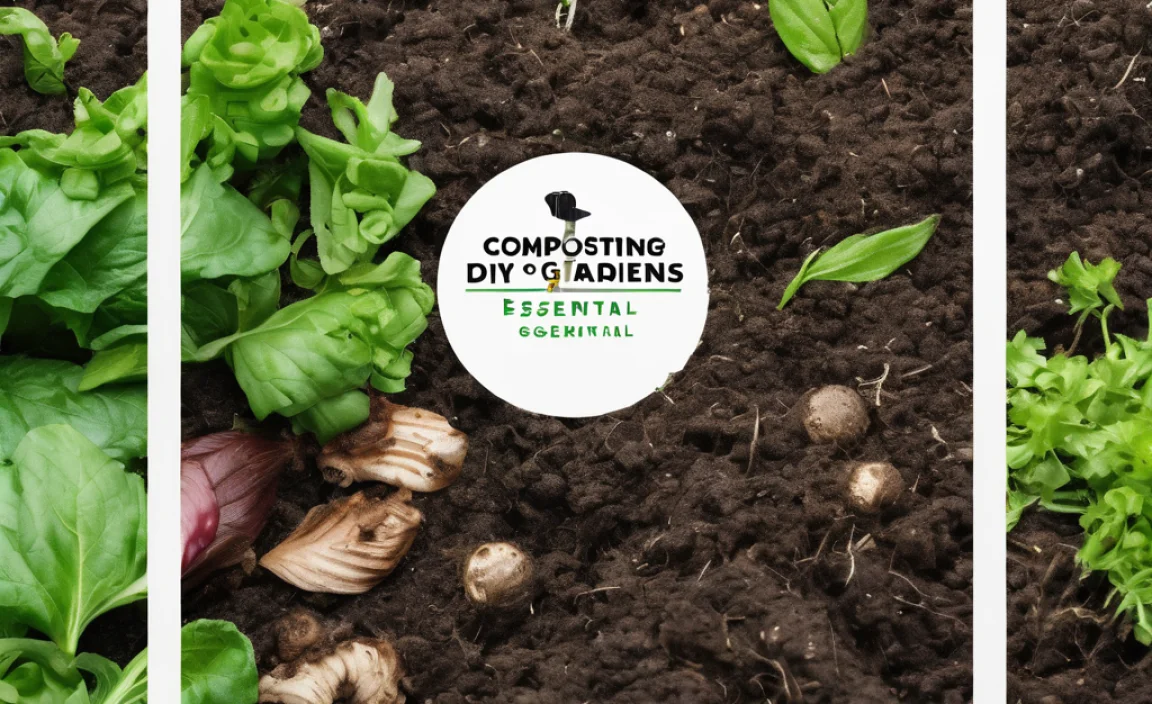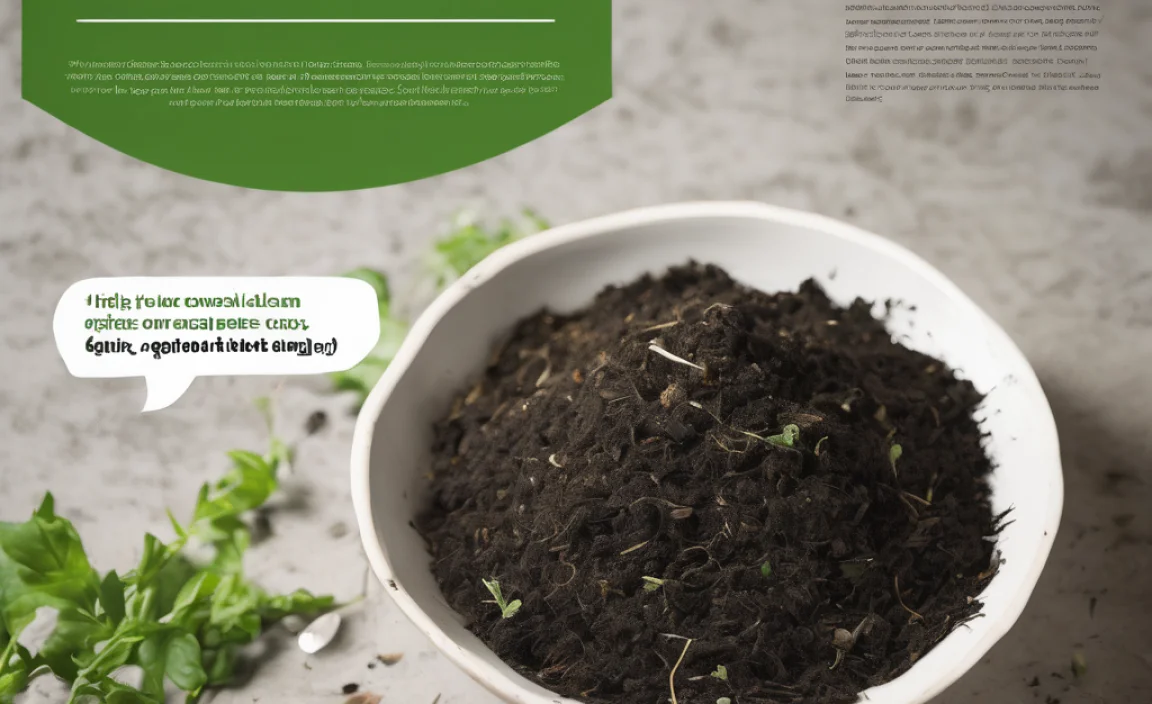Ever feel like your trash bin is overflowing? It’s a common feeling, especially when you realize how much of that waste could actually be useful. Food scraps, yard trimmings – they all add up. But what if there was a simple way to figure out just how much you could be diverting from the landfill? And what if that showed you exactly how much good you were doing?
Well, guess what? There is! It’s called a composting calculator, and it’s a pretty neat tool for anyone looking to reduce their waste and help the planet. Think of it as your personal waste-reduction tracker. We’re going to walk through how to use one, what it means, and why it’s a genius move for your home.
Ready to see your waste disappear (in a good way)? Let’s dive in!
Composting Calculator: Your Genial Guide to Reducing Waste
Hey there, fellow home improvers and garden enthusiasts! Troy D Harn here, from TopChooser. You know, I’ve always believed that making a big difference often starts with small, simple steps. And when it comes to reducing waste, one of the most impactful things we can do is compost. But sometimes, it’s hard to grasp how much of a difference we’re actually making. That’s where a composting calculator comes in. It’s like a secret weapon for your green thumb and your conscience!
This isn’t about complicated formulas or garden jargon. It’s about practical, real-world results that you can see and feel. Think of it as a friendly neighbor showing you a clever shortcut that makes a chore feel like a win. We’re going to break down what a composting calculator is, how to use it, and why it’s a total game-changer for reducing household waste. Let’s get started!
What Exactly Is a Composting Calculator?

Simply put, a composting calculator is a tool that helps you estimate how much organic waste your household produces and, consequently, how much of that waste could be composted. It takes into account things like the number of people in your household, your typical waste disposal habits, and the types of organic materials you tend to throw away.
Why is this helpful? Because knowing the numbers makes the benefit tangible. You’re not just “reducing waste”; you’re potentially diverting X pounds of food scraps and Y pounds of yard waste from the landfill each week or month. This understanding can be incredibly motivating!
Why Use a Composting Calculator? The Sweet Benefits
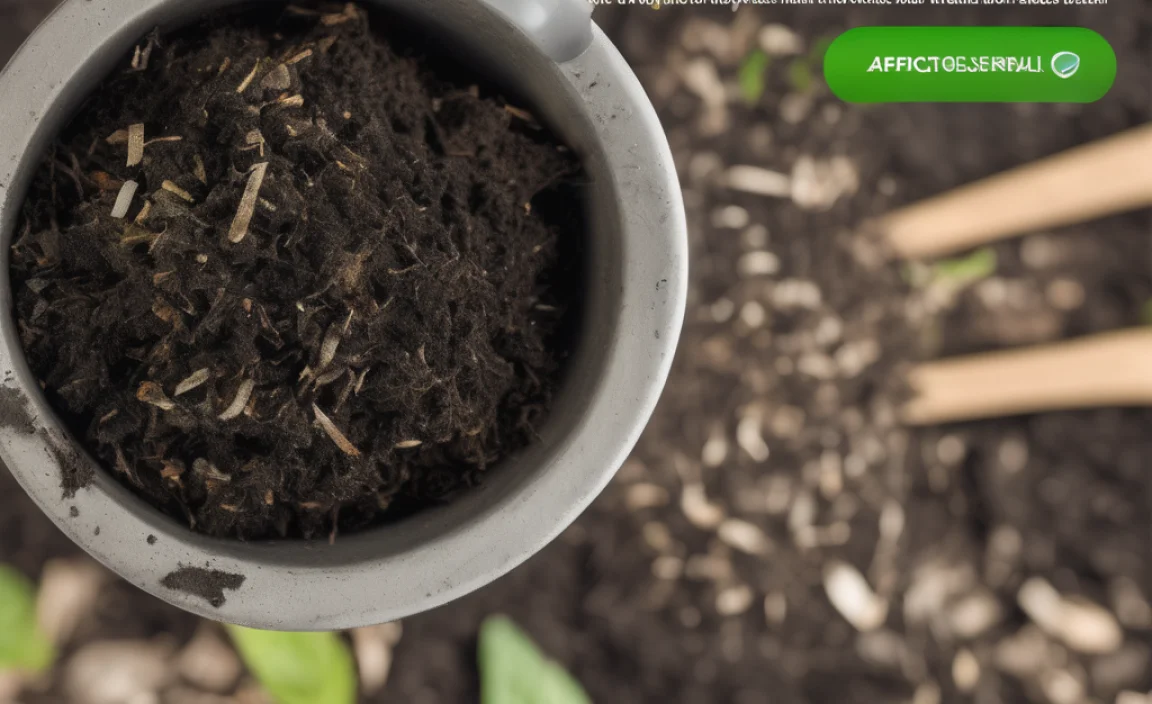
Before we jump into the ‘how-to,’ let’s chat about why this is such a smart move. It goes beyond just feeling good about recycling. The impacts are real:
- Quantifiable Waste Reduction: See exactly how much you’re keeping out of landfills. This is powerful!
- Informed Choices: Understand what types of waste you produce most, helping you adjust your habits.
- Environmental Impact: Composting reduces methane gas emissions from landfills, which is a major greenhouse gas. It also creates valuable soil amendment.
- Cost Savings: Less trash can mean lower waste disposal fees in some areas. Plus, you get free, nutrient-rich compost for your garden!
- Education and Awareness: It’s a fantastic way to learn about your household’s consumption and waste patterns, and to involve your family.
How to Use a Composting Calculator: A Simple Step-by-Step

Using these calculators is usually straightforward. They are designed for everyday folks, not for scientists! Here’s a general guide, though the exact steps might vary slightly depending on the specific calculator you find online.
Step 1: Find a Calculator.
A quick search for “composting calculator” will bring up several options from environmental organizations, waste management companies, or gardening websites. Look for one that seems user-friendly. Some popular ones are offered by municipal waste services or university extension offices, which are usually very reliable.
Step 2: Gather Your Household Information.
You’ll typically need to know:
- The number of people in your household.
- How many trash bags your household fills per week (and roughly how full they are).
- Whether you have a yard and how much yard waste you generate (if any).
Step 3: Input Your Data.
Carefully enter the information you gathered into the calculator’s fields. Be honest – the more accurate your input, the more accurate your results will be.
Step 4: Understand Your Results.
The calculator will then provide you with estimates. This usually includes:
- Estimated Organic Waste: This is the total amount of food scraps, yard waste, and other compostable materials your household likely produces.
- Potential Landfill Diversion: This shows you how much of that organic waste could be composted instead of sent to the landfill.
- Environmental Benefits: Some calculators will even show you the equivalent environmental savings, like the number of trees saved or greenhouse gas emissions reduced.
Step 5: Take Action!
The most important step! Use the results to motivate you to start or improve your composting efforts. If the calculator shows you’re producing a lot of food waste, focus on collecting those kitchen scraps. If yard waste is a big contributor, consider how and where you can compost leaves and grass clippings.
What Kind of Waste Can You Compost?
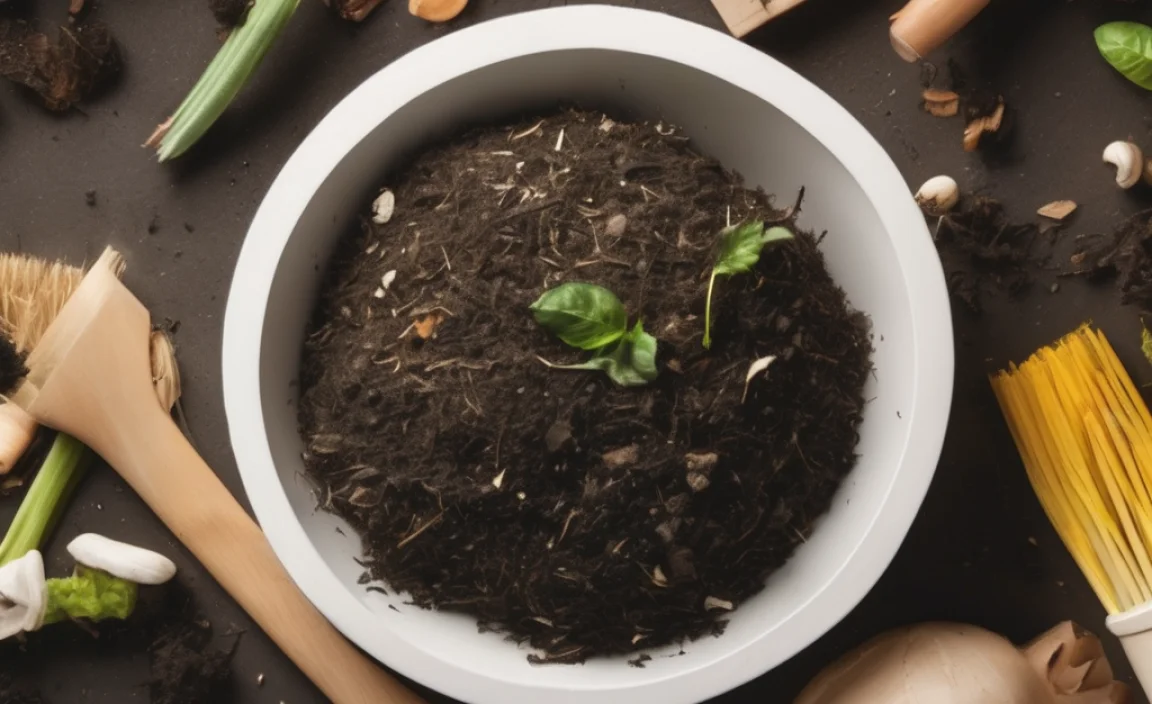
Understanding your output is one thing, but knowing what goes into the compost bin is key. Not everything can be composted. Here’s a general breakdown:
Good Composting Materials (Greens & Browns)
Composting relies on a balance of “green” (nitrogen-rich) and “brown” (carbon-rich) materials. Aim for a ratio of roughly 2 parts browns to 1 part greens for best results.
Greens (Nitrogen-Rich)
These are typically moist materials that break down quickly.
- Fruit and vegetable scraps
- Coffee grounds and filters
- Tea bags (staples removed)
- Grass clippings (in moderation)
- Plant trimmings
- Eggshells (crushed)
Browns (Carbon-Rich)
These are drier materials that provide structure and air circulation.
- Dry leaves
- Straw or hay
- Shredded newspaper (black and white ink only)
- Cardboard (torn into small pieces)
- Wood chips or sawdust (from untreated wood)
- Twigs and small branches
Materials to Avoid in Your Compost Pile
Putting the wrong things in can attract pests, create bad odors, or introduce harmful pathogens.
- Meat, fish, and bones (attract pests, smell bad)
- Dairy products (attract pests, smell bad)
- Oily or greasy foods (slow decomposition, attract pests)
- Diseased plants or weeds that have gone to seed (can spread disease or weeds)
- Pet waste (dog and cat feces can contain pathogens)
- Treated wood or sawdust
- Coal or charcoal ash
- Synthetic materials (plastics, synthetic fabrics, etc.)
Types of Composting and How They Relate
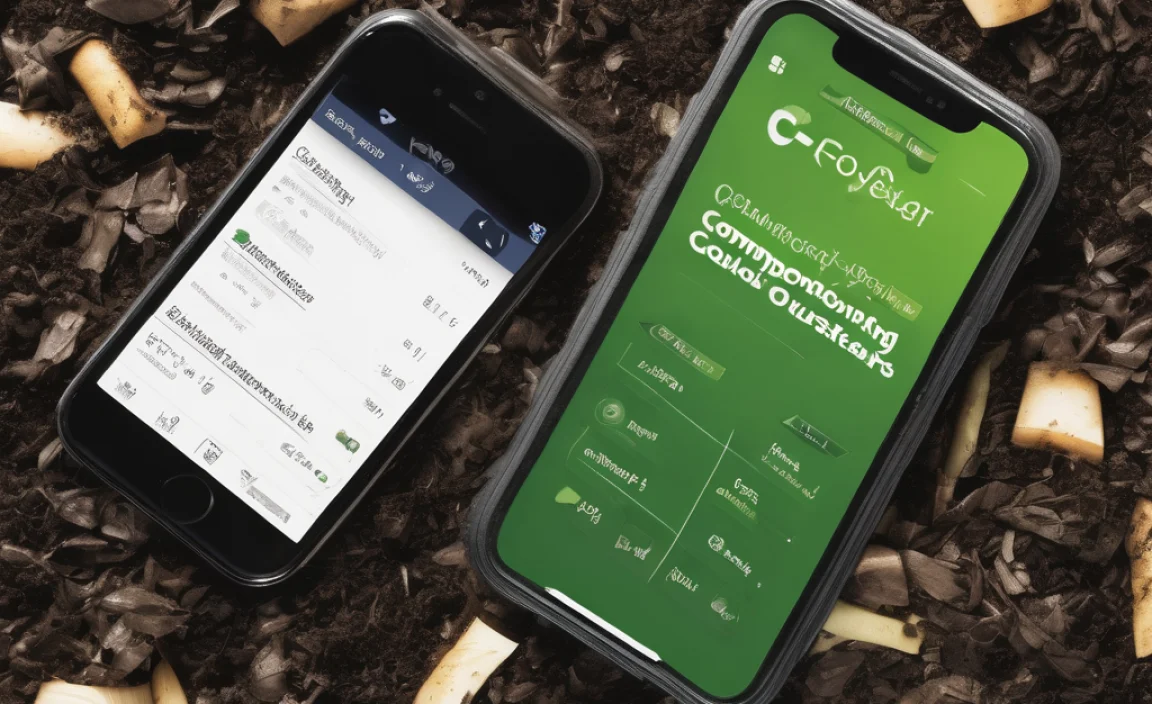
The type of composting you do can influence what a calculator might estimate for your household. Some methods are better suited for different spaces and waste streams. Knowing your options helps you plan!
Backyard Composting
This is the most common method for homeowners with outdoor space. You can use a simple pile, a bin, or a tumbler.
- Pros: Can handle larger volumes of yard waste and kitchen scraps.
- Cons: Requires outdoor space, can take time and effort to manage.
Worm Composting (Vermicomposting)
Uses red wiggler worms to break down food scraps in a controlled environment, often indoors or on a balcony.
- Pros: Great for apartment dwellers, produces high-quality compost (worm castings), fast processing of food scraps.
- Cons: Cannot handle large volumes of yard waste, requires specific conditions for worms.
Bokashi Composting
An anaerobic (oxygen-free) fermentation process that uses specific microbes. It can handle food scraps that are typically harder to compost, like meat and dairy.
- Pros: Can compost meat, dairy, and oils; compact, no odor during fermentation; produces a nutrient-rich liquid fertilizer.
- Cons: Requires purchasing special bran; the fermented material still needs to be buried or added to a traditional compost pile to fully decompose.
Trench Composting
Digging a trench or hole in your garden and burying food scraps directly. The soil microbes and worms break them down over time.
- Pros: Simple, out of sight, directly enriches your garden soil.
- Cons: Requires digging space, slower decomposition, can’t handle as much material as a proper pile.
Putting the Calculator Data to Work: Practical Tips
So, your calculator told you you’re tossing out about 10 pounds of food scraps per week. That’s a fantastic starting point! What next?
1. Start Collecting Kitchen Scraps: Get a small bin for your countertop. Line it with a compostable bag or newspaper, or just empty it daily into your main compost bin or bucket. This makes it super convenient.
2. Balance Your Greens and Browns: If your calculator highlights a lot of food scraps (greens), make sure you have enough dry leaves or shredded paper (browns) to add to your pile. This helps prevent slimy, smelly compost.
3. Consider a Tumbler vs. a Bin: If you have a lot of material and want faster compost, a tumbler might be a good investment. For smaller households or those with more patience, a simple bin or even an open pile works.
4. Mulch Your Yard Waste: If yard waste is a big number, invest in a mulching mower for your grass clippings. They break down quickly when left on the lawn. Collect leaves in the fall – they are compost gold!
5. Educate Your Household: Share the results of the calculator with everyone in your home. When people see the numbers, it can be a powerful motivator for them to participate.
Estimating Your Household’s Waste (A Closer Look)
Let’s delve a little deeper into how waste is estimated. While calculators vary, they often use average figures based on population studies. For instance, the United States Environmental Protection Agency (EPA) provides data on municipal solid waste generation. According to their 2018 data, the average American generated about 4.9 pounds of waste per day. Of this, about 1.21 pounds per day was food waste, and 1.67 pounds per day was yard waste. This means a significant portion, over 50%, of our trash is potentially compostable!
Here’s a simplified example of how a calculator might work:
| Factor | Household A (2 people) | Household B (4 people) |
|---|---|---|
| Average Food Waste per Person per Week (lbs) | 2.5 lbs | 2.5 lbs |
| Total Food Waste per Week (lbs) | 5 lbs (2.5 x 2) | 10 lbs (2.5 x 4) |
| Average Yard Waste per Household per Week (lbs) – Seasonal | 5 lbs (lighter usage) | 15 lbs (heavier usage) |
| Total Compostable Waste per Week (lbs) | 10 lbs | 25 lbs |
| % of Waste Potentially Compostable (Estimates vary) | 63% | 63% |
| Estimated Landfill Diversion per Week (lbs) | 6.3 lbs | 15.75 lbs |
Notice how the percentage of compostable waste can be similar, but the total amount varies significantly with household size and yard maintenance. This table just gives you a rough idea of the numbers involved!
DIY Compost Bin Ideas (Simple & Affordable)
You don’t need fancy equipment to start. Here are some easy DIY compost bin ideas:
- Wire Mesh Bin: Simply create a cylinder using hardware cloth or chicken wire, securing the ends. Easy to build and allows good airflow.
- Pallet Bin: Collect free wooden pallets and fasten them together to form a square or U-shaped bin. Great for larger spaces.
- Trash Can Composter: Drill plenty of holes in a large plastic trash can for aeration. You can even add a layer of gravel at the bottom for drainage.
For a more detailed guide on building your own, you can often find excellent resources from university extension programs. For example, the University of Maryland Extension offers practical advice on composting for home gardeners.
Composting Calculator: Impact Beyond Your Bin
Thinking about the impact of your composting efforts can be truly heartening. When you reduce waste, you’re not just saving space in your own bin. You’re contributing to larger environmental goals.
- Reduced Landfill Burden: Landfills take up valuable space and can leach harmful chemicals into the soil and groundwater. Diverting organic waste significantly lightens this load.
- Greenhouse Gas Reduction: Organic matter decomposing in an oxygen-rich compost pile produces far fewer greenhouse gases, like methane, than when it rots anaerobically in a landfill. The EPA notes that food waste is a significant contributor to methane emissions in landfills.
- Soil Health Improvement: The compost you create is packed with nutrients and beneficial microbes. Adding it to gardens and lawns revitalizes the soil, improves water retention, and reduces the need for synthetic fertilizers.
- Water Conservation: Healthy, compost-amended soil holds moisture better, meaning you’ll need to water your plants less frequently.
Using a calculator helps you visualize these big-picture benefits on a personal level, making your efforts feel more meaningful. It’s a gentle nudge to keep going and to do more.
Common Challenges and How to Overcome Them
Even with the best intentions, composting can sometimes present challenges. Don’t let them discourage you! Here are a few common issues and easy fixes:
- Bad Odors: This is usually a sign of too much “green” material or not enough air.
- Solution: Add more “brown” materials (leaves, shredded paper) and turn your compost pile to aerate it. Avoid adding meat or fatty foods.
- Compost Pile is Too Wet: Smelly, slimy problems often stem from excess moisture.
- Solution: Mix in dry, brown materials and turn the pile. If it’s very wet, you can cover it briefly during heavy rain, but ensure it still gets some air.
- Attracting Pests (Rodents, Flies): This is a common concern.
- Solution: Ensure you’re not adding meat, dairy, or oily foods. Bury food scraps deep within the pile, especially when you first add them. Using a compost bin with a lid can also help.
- Slow Decomposition: Your pile isn’t heating up or breaking down.
- Solution: Ensure a good mix of greens and browns. Chop larger items into smaller pieces. Add a bit of water if it’s too dry. Turning the pile regularly will also speed things up.
Remember to check out resources from your local municipality or university extension offices, as they often have specific advice tailored to your region and climate.
FAQ: Your Composting Calculator Questions Answered
Q1: What is the easiest composting calculator to use?
A1: Generally, online calculators provided by waste management services or environmental non-profits are the most user-friendly. Look for clear input fields and straightforward results. Many are designed to be intuitive, even if you’re new to this.
Q2: Do I need exact measurements for a composting calculator?
A2: No, not at all! Calculators work best with good estimates. Think about how many trash bags you fill weekly and roughly what’s in them. For yard waste, consider if

I am passionate about home engineering. I specialize in designing, installing, and maintaining heating, ventilation, and air conditioning systems. My goal is to help people stay comfortable in their homes all year long.

